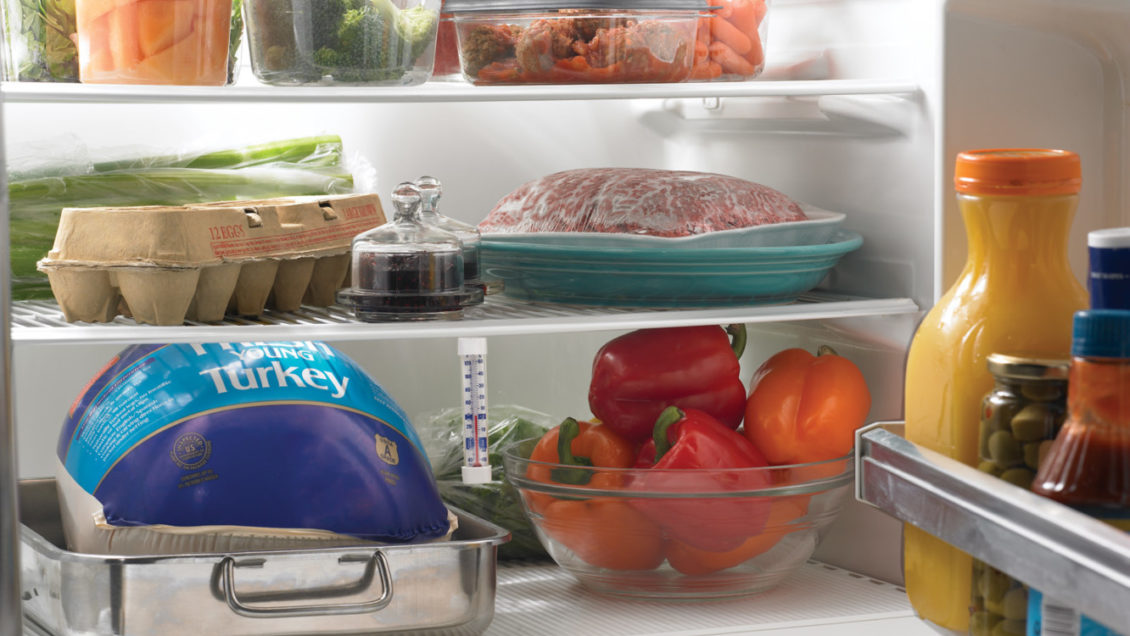CLEMSON – Homes that were without electricity to keep freezers and refrigerators running due to Hurricane Florence may have food that’s unsafe to eat.

Clemson food safety expert Adair Hoover has a few tips to help people know what to keep and what to discard.
“The key to determining the safety of foods in refrigerators and freezers is how cold they are,” Hoover said. “Try to keep food at 40 degrees or below since foodborne bacteria can rapidly multiply at temperatures above 40 degrees.”
Food that is in refrigerators should be safe as long as the power is not out for more than four hours. Discard any perishable food that has been in temperatures above 40 degrees for two hours or more. It also is recommended to toss out any food that has an unusual odor, color or texture. Hoover also advises people to leave refrigerator doors closed as much as possible during power outages as opening the door allows cold air to escape.
Foods that should be discarded if kept for more than two hours at temperatures higher than 40 degrees include:
- Meat, poultry, fish, eggs and egg substitutes – raw or cooked
- Milk, cream, sour cream, buttermilk, soy milk and yogurt
- Soft, processed, shredded or low-fat cheeses
- Casseroles, stews or soups
- Cooked vegetables; baked potatoes
- Lunch meats and hot dogs
- Packaged, pre-cut, pre-washed greens
- Creamy-based salad dressings, oyster sauce, garlic in oil mixtures
- Spaghetti sauce, vegetable juice (opened jar)
- Custard, chiffon or cheese pies; quiche
- Cream-filled pastries
- Refrigerator biscuits, rolls, cookie dough
- Discard open mayonnaise, tartar sauce and horseradish if held above 50 degrees for more than eight hours.
The following foods should remain safe even when kept at room temperature a few days. Still, discard anything that turns moldy or has an unusual odor.
- Butter or margarine
- Hard and processed cheeses
- Fresh fruits and vegetables
- Dried fruits and coconut
- Opened jars of vinegar-based salad dressing, jelly, relish, taco sauce, barbecue sauce, Worcestershire sauce, mustard, ketchup, olives, pickles and peanut butter
- Fruit juices
- Fresh herbs and spices
- Fruit pies, bread, rolls and muffins
- Cakes, except cream cheese-frosted or cream-filled
- Flour and nuts
For freezers, Hoover suggests leaving the freezer door closed. A full freezer should keep food safe for about two days. Freezers that are half-full should keep food safe for about one day. Add bags of ice or dry ice to a freezer if it appears power will be off for an extended time.
Frozen foods that have reached temperatures of 40 degrees and above for more than two hours are not safe to eat. Discard these items. You may safely refreeze foods if:
- They still contain ice crystals, or
- They have not exceeded 40 degrees for two hours or more or
- They have been held at refrigerated temperatures (40 degrees or less) no more than two days.
Fresh meats, poultry, fish and shellfish are unsafe to eat when they start to spoil. Examine each package of food before deciding what to do with it. If the color or odor is poor or questionable, discard it. Be especially careful with ground, cubed or sliced meats; poultry; and all fish and shellfish because they are highly perishable. If they have completely thawed, it is best to discard these items.

Group meat and poultry to one side or on a tray so that if they begin to thaw, their juices will not get on other food. Be sure to discard any fully cooked items either in the freezer or the refrigerator that have come in contact with raw meat juices.
Hoover said people should never taste food to determine its safety.
“Some foods may look and smell fine, but if they’ve been at room temperature longer than two hours, bacteria able to cause foodborne illness can begin to multiply very rapidly,” Hoover said. “Some bacteria produce toxins, which are not destroyed by cooking and can possibly cause illness.”
If food spoils and leaves odors in a freezer, Hoover suggests cleaning with one tablespoon of baking soda to one quart of tap water. Another cleaning method is to use one cup of vinegar to one gallon of tap water. If odors remain after using these methods, Hoover suggests placing activated charcoal in pans or on paper in the bottom of the freezer for several days. If the odor still remains, put in new charcoal. Once the odor is gone, rinse and dry the freezer.
For more information, visit Clemson’s Home and Garden Information Center at https://hgic.clemson.edu/
Get in touch and we will connect you with the author or another expert.
Or email us at news@clemson.edu

